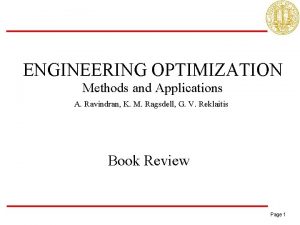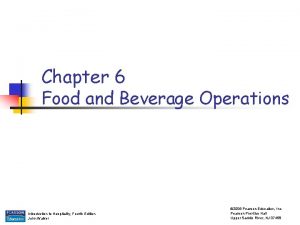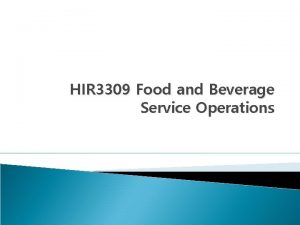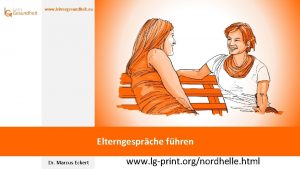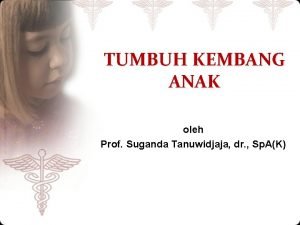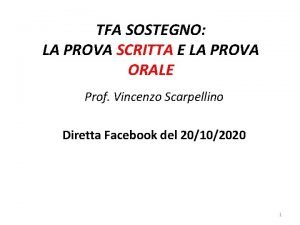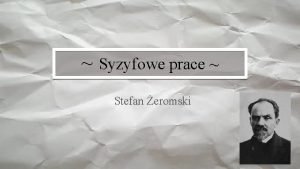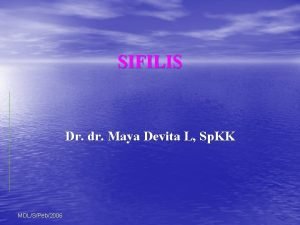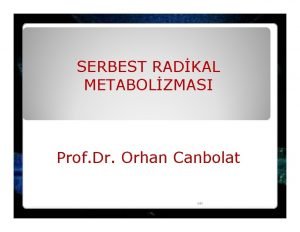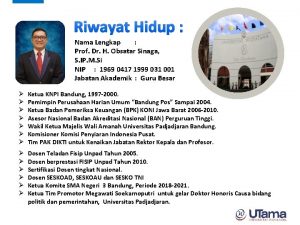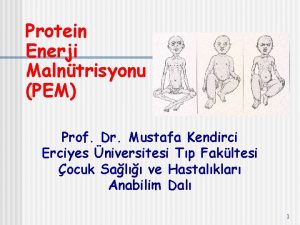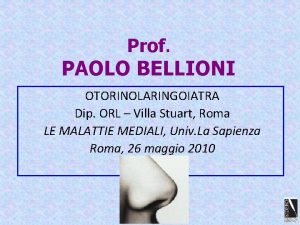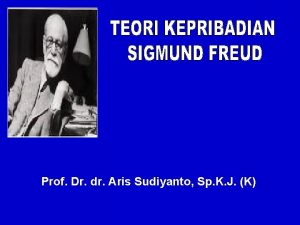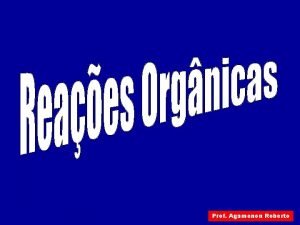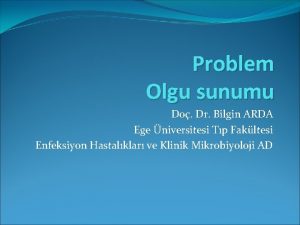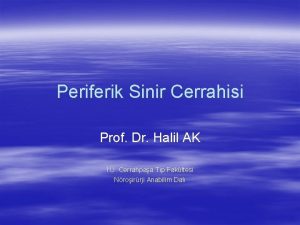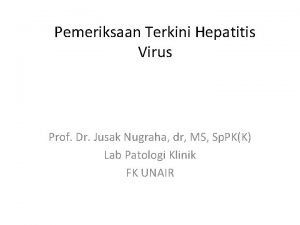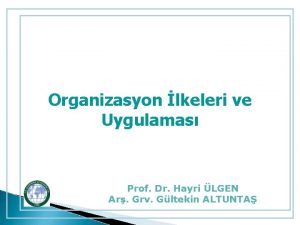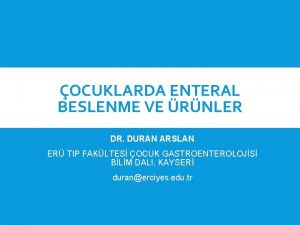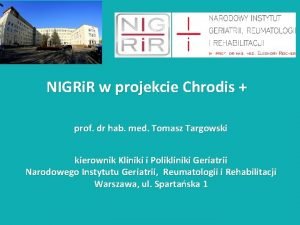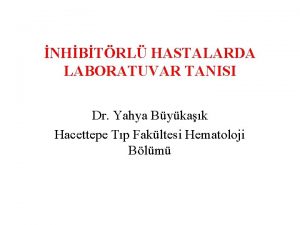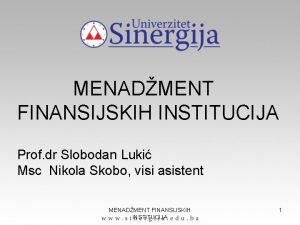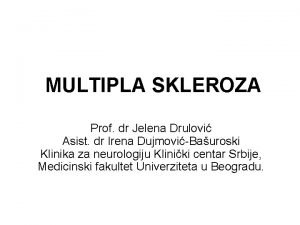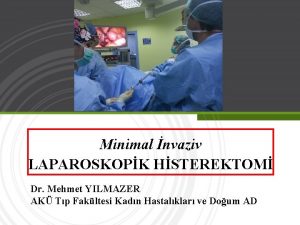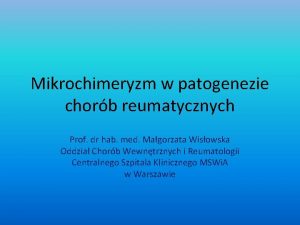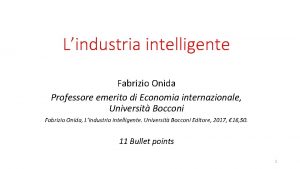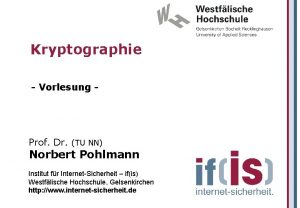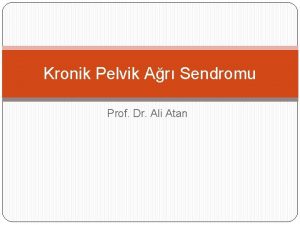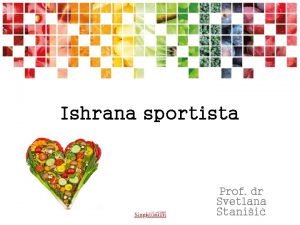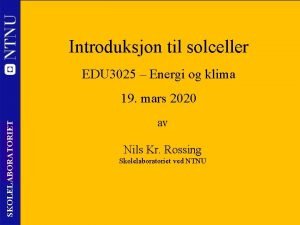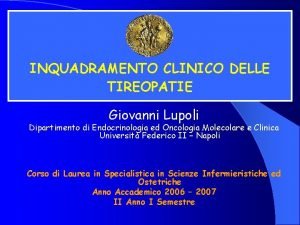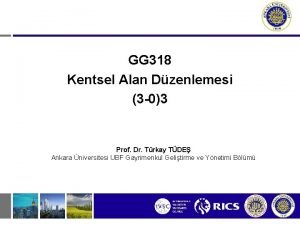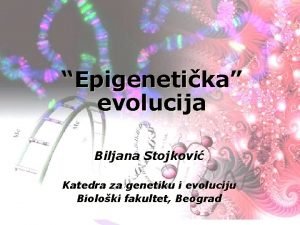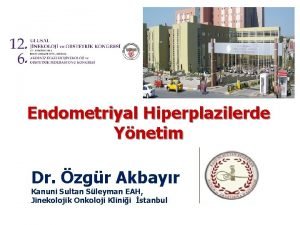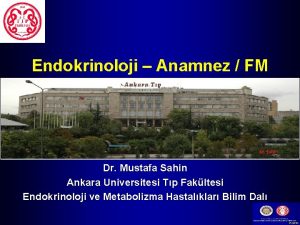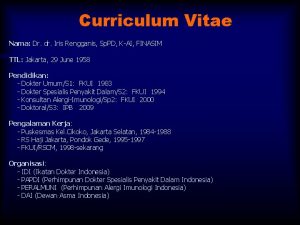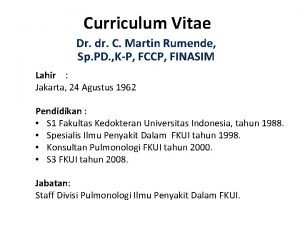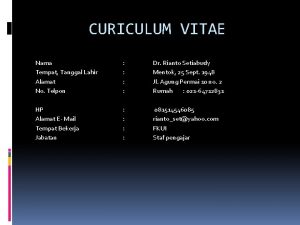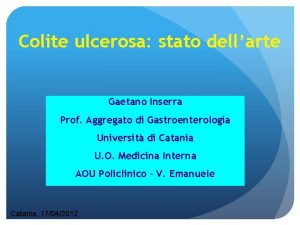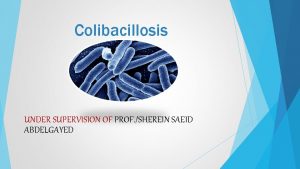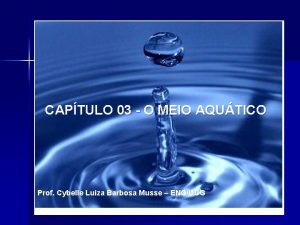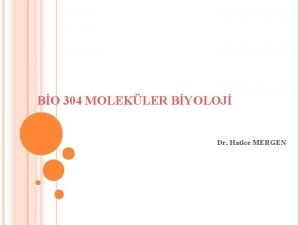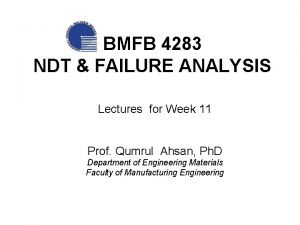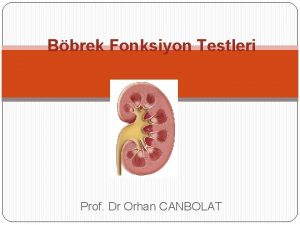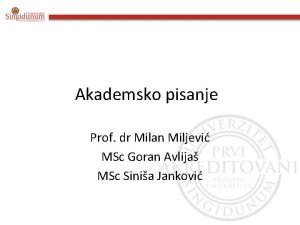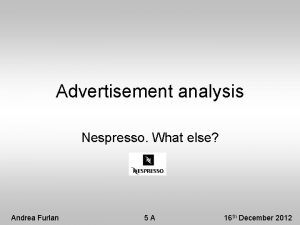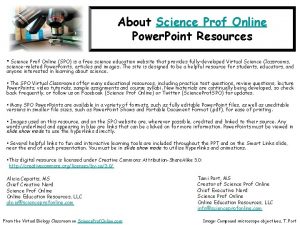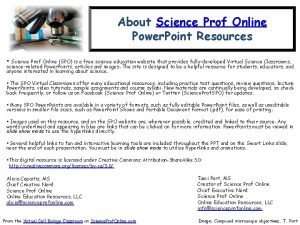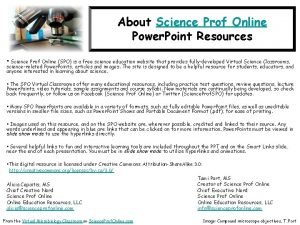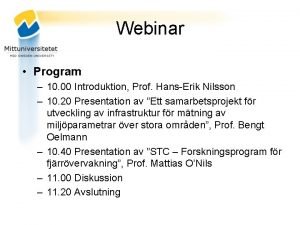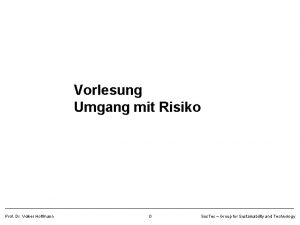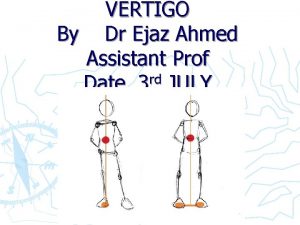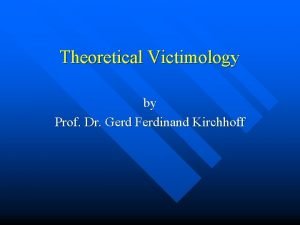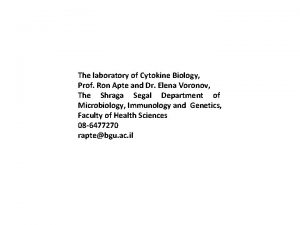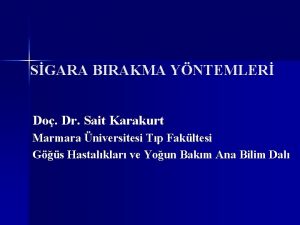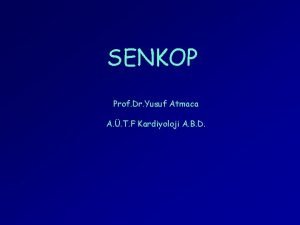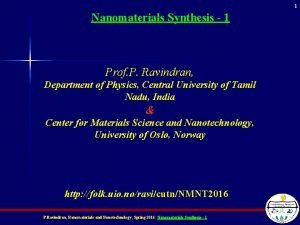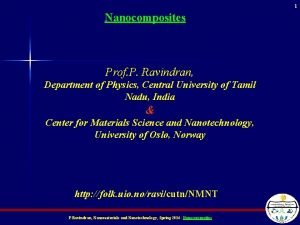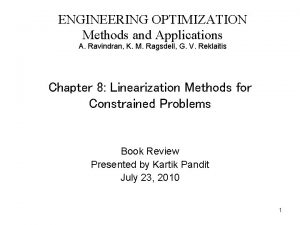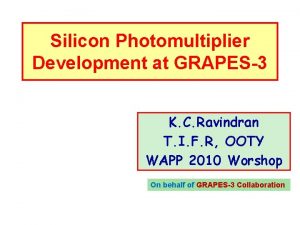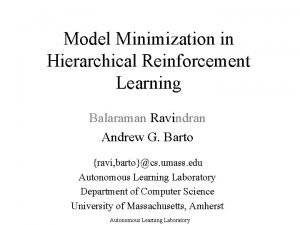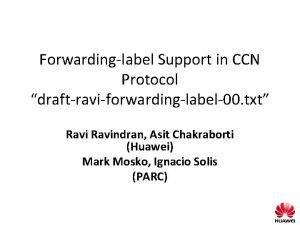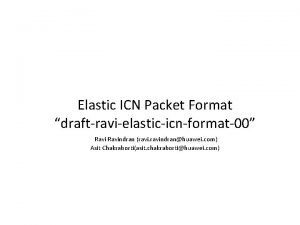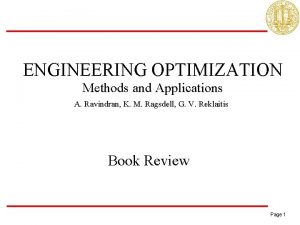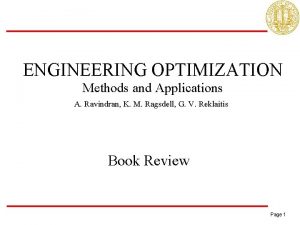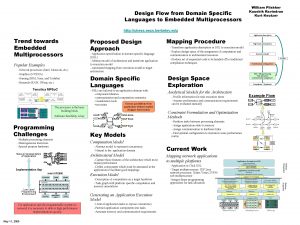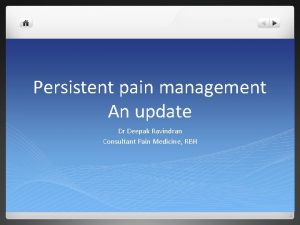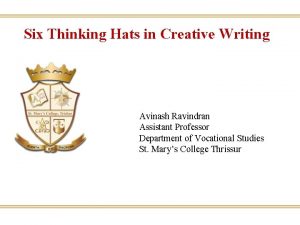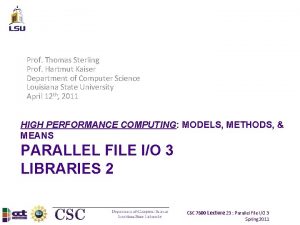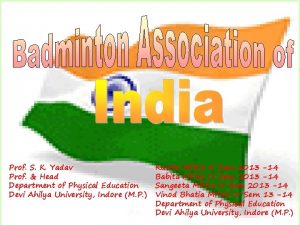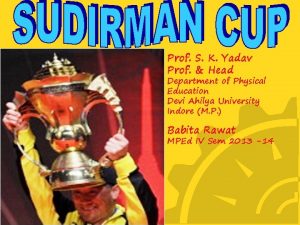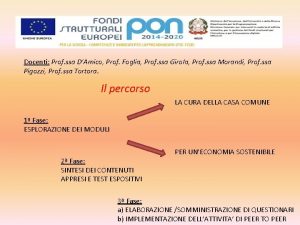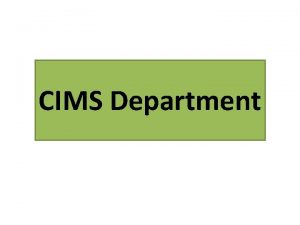1 Introduction to Nanotechnology2 Prof P Ravindran Department



























































































- Slides: 91

1 Introduction to Nanotechnology-2 Prof. P. Ravindran, Department of Physics, Central University of Tamil Nadu, India & Center for Materials Science and Nanotechnology, University of Oslo, Norway http: //folk. uio. no/ravi/cutn/teaching. html P. Ravindran, Nanomaterials and Nanotechnology, Spring 2016: Introduction to Nanotechnology - 2

2 Nanoscale No. Item Size (Approx. ), Scaling down µm to nm Size (Approx. ), on nm Scale 1. Human hair (diameter) 60 – 120 µm 60, 000 – 120, 000 2. Pollen 10 – 100 µm 10, 000 – 100, 000 3. Asbestos fibers (diameter) < 3 µm < 3, 000 4. Diesel exhaust particles < 100 nm – 1 µm < 100 nm – 1000 5. Soot < 10 nm – 1 µm < 10 nm – 1000 6. Quantum dots 2 – 20 nm 2 – 20 7. Nanotubes (diameter) ~1 nm ~1 8. Fullerenes ~ 1 nm ~1 9. Atoms 1 -3 Å ~ 0. 1 nm 1 -3 Å ~ 0. 1 P. Ravindran, Nanomaterials and Nanotechnology, Spring 2016: Introduction to Nanotechnology - 2

3 Why nano will change the properties of materials? Example: Smaller size means larger surface area diameter 10 µm Area 0. 22 m 2/g 50 nm diameter 44 m 2/g 3 P. Ravindran, Nanomaterials and Nanotechnology, Spring 2016: Introduction to Nanotechnology - 2

4 Why nano will change the properties of materials? Smaller size means larger surface area 12 11 10 9 8 7 S/ 6 V 5 4 3 2 1 0 Sphere n n n Volume, V Surface Area, S Ratio S/V 1/R = = = 4/3 π R 3 4 π R 2 3 /R α He atom, 2 R = 0. 1 nm. S/V = 6 × 1010 R 0. 5 1 2 3 4 5 R P. Ravindran, Nanomaterials and Nanotechnology, Spring 2016: Introduction to Nanotechnology - 2 R S/V 3 1 2 1. 5 1 3 0. 5 6 0. 25 12 0. 125 24

How to Make Nanostructures? Top-down Approach Building something by starting with a larger component and carving away material (like a sculpture) In nanotechnology: patterning (using photolithography) and etching away material, as in building integrated circuits Rock Statue P. Ravindran, Nanomaterials and Nanotechnology, Spring 2016: Introduction to Nanotechnology - 2 5

Top-down approaches 6 These seek to create smaller devices by using larger ones to direct their assembly. n Many technologies that descended from conventional solid-state silicon methods for fabricating microprocessors are now capable of creating features smaller than 100 nm, falling under the definition of nanotechnology. Giant magnetoresistance-based hard drives already on the market fit this description, as do atomic layer deposition (ALD) techniques. P. Ravindran, Nanomaterials and Nanotechnology, Spring 2016: Introduction to Nanotechnology - 2

Top-down approaches n n Atomic force microscope tips can be used as a nanoscale "write head" to deposit a chemical upon a surface in a desired pattern in a process called dip pen nanolithography. This fits into the larger subfield of nanolithography. Solid-state techniques can also be used to create devices known as nanoelectromechanical systems or NEMS, which are related to microelectromechanical systems or MEMS. P. Ravindran, Nanomaterials and Nanotechnology, Spring 2016: Introduction to Nanotechnology - 2 7

Top-down approaches n Focused ion beams can directly remove material, or even deposit material when suitable pre-cursor gasses are applied at the same time. For example, this technique is used routinely to create sub-100 nm sections of material for analysis in Transmission electron microscopy. P. Ravindran, Nanomaterials and Nanotechnology, Spring 2016: Introduction to Nanotechnology - 2 8

How to Make Nanostructures? Bottom-up Building something by assembling smaller components (like building a car engine), atom by atom assembly. In nanotechnology: self-assembly of atoms and molecules, as in chemical and biological systems Brick Building P. Ravindran, Nanomaterials and Nanotechnology, Spring 2016: Introduction to Nanotechnology - 2 9

Bottom-up approaches 10 These seek to arrange smaller components into more complex assemblies. n DNA nanotechnology utilizes the specificity of Watson–Crick basepairing to construct well-defined structures out of DNA and other nucleic acids. • Approaches from the field of "classical" chemical synthesis also aim at designing molecules with well-defined shape (e. g. bis-peptides). P. Ravindran, Nanomaterials and Nanotechnology, Spring 2016: Introduction to Nanotechnology - 2

Bottom-up approaches n More generally, molecular self-assembly seeks to use concepts of supramolecular chemistry, and molecular recognition in particular, to cause single-molecule components to automatically arrange themselves into some useful conformation. P. Ravindran, Nanomaterials and Nanotechnology, Spring 2016: Introduction to Nanotechnology - 2 11

Functional approaches n n 12 These seek to develop components of a desired functionality without regard to how they might be assembled. Synthetic chemical methods can also be used to create what forensics call synthetic molecular motors, such as in a so-called nanocar. P. Ravindran, Nanomaterials and Nanotechnology, Spring 2016: Introduction to Nanotechnology - 2

Functional approaches n 13 Molecular electronics seeks to develop molecules with useful electronic properties. These could then be used as single-molecule components in a nanoelectronic device. For an example see rotaxane. • The Nokia Morph is a concept mobile phone created by Finnish company Nokia. The phone's theoretical feature list would include the ability to bend into numerous shapes, transparent electronics, self-cleaning surfaces and a wide range of fully integrated sensors. P. Ravindran, Nanomaterials and Nanotechnology, Spring 2016: Introduction to Nanotechnology - 2

14 P. Ravindran, Nanomaterials and Nanotechnology, Spring 2016: Introduction to Nanotechnology - 2

15 Molecular self-assembly is the process by which molecules adopt a defined arrangement without guidance or management from an outside source. There are two types of self-assembly: v. Intramolecular self-assembly folding v. Intermolecular self-assembly. An example of a molecular self-assembly through hydrogen bonds reported by Meijer and coworkers. 15 P. Ravindran, Nanomaterials and Nanotechnology, Spring 2016: Introduction to Nanotechnology - 2

16 P. Ravindran, Nanomaterials and Nanotechnology, Spring 2016: Introduction to Nanotechnology - 2

17 Supramolecular Systems Molecular self-assembly is a key concept in supramolecular chemistry since assembly of the molecules is directed through noncovalent interactions (e. g. , hydrogen bonding, metal coordination, hydrophobic forces, van der Waals forces, π-π interactions, and/or electrostatic) as well as electromagnetic interactions. Common examples include the formation of micelles, vesicles and liquid crystal phases. 17 P. Ravindran, Nanomaterials and Nanotechnology, Spring 2016: Introduction to Nanotechnology - 2

18 Biology as a template Biological systems are most effective and efficient manufacturing systems known: DNA polymerase: reliable replication, with error rate ~ 1 in 10, 000, 000 F 1 F 0 ATP synthase: most efficient motor known (~90 -100%) P. Ravindran, Nanomaterials and Nanotechnology, Spring 2016: Introduction to Nanotechnology - 2

19 Biology as a template Based on simple processes (e. g. polymerisation) Create one basic geometry (linear chains) Rely on self-interactions to generate functional structures automatically (“self-assembly”, “folding” in biology) But we still can’t reliably predict folding for known structures after decades of intensive research! How do we design, de novo, both novel chemistries or functions, and the folds protein folds to achieve them? P. Ravindran, Nanomaterials and Nanotechnology, Spring 2016: Introduction to Nanotechnology - 2

20 Biological Systems Molecular self-assembly is crucial to the function of cells. It is exhibited in the self-assembly of lipids to form the membrane, the formation of double helical DNA through hydrogen bonding of the individual strands, and the assembly of proteins to form quaternary structures. Molecular self-assembly of incorrectly folded proteins into insoluble amyloid fibers is responsible for infectious prion-related neurodegenerative diseases. 20 P. Ravindran, Nanomaterials and Nanotechnology, Spring 2016: Introduction to Nanotechnology - 2

21 Nanotechnology The DNA structure at left will self-assemble into the structure visualized by atomic force microscopy at right. 21 P. Ravindran, Nanomaterials and Nanotechnology, Spring 2016: Introduction to Nanotechnology - 2

22 Nanotechnology – Molecular Self assembly Ø Molecular self-assembly is an important aspect of bottom-up approaches to nanotechnology. Using molecular self-assembly the final (desired) structure is programmed in the shape and functional groups of the molecules. Ø Self-assembly is referred to as a 'bottom-up' manufacturing technique in contrast to a 'top-down' technique such as lithography where the desired final structure is carved from a larger block of matter. Ø In the speculative vision of molecular nanotechnology, microchips of the future might be made by molecular self-assembly. Ø An advantage to constructing nanostructure using molecular selfassembly for biological materials is that they will degrade back into individual molecules that can be broken down by the body. 22 P. Ravindran, Nanomaterials and Nanotechnology, Spring 2016: Introduction to Nanotechnology - 2

23 The motivation for molecular nanotechnology 1. Biology provides proof of the feasibility of nanotechnology, supplies a fully functional model 2. Structures that are able to self-replicate exist in Nature 3. Nanoscale machines do not violate any laws of physics, in principle 4. We can conceive of “bottom-up” fabrication, even starting from the atomic level 5. Structures where atoms are arranged precisely exist in Nature Hence we should be able to build nanoscale, self-replicating, programmable “assemblers” capable of manufacturing arbitrary objects from atomic constituents P. Ravindran, Nanomaterials and Nanotechnology, Spring 2016: Introduction to Nanotechnology - 2

The basic concept Molecular nanotechnology: “Thorough, inexpensive control of the structure of matter based on molecule-by-molecule control of products and byproducts of molecular manufacturing. ” Unbounding the Future, Drexler et al. , 1991 Based on: The concept of the molecular “assembler”: pick up and manipulate atoms, establish chemical bonds between arbitrary atoms Incorporation of assemblers into self-replicating machines Molecular-scale computation, programming, data storage, and integration P. Ravindran, Nanomaterials and Nanotechnology, Spring 2016: Introduction to Nanotechnology - 2 24

25 The Promise of Molecular Nanotechnology “Imagine a manufacturing technology capable of making trillions of tiny machines — each the size of a bacteria. Each machine could contain an onboard device programmed to control a set of molecular scale tools and manipulators. An individual machine could be designed to manufacture superior materials, convert solar energy to electricity, or even, ultimately, enter the body to fight disease and aging at the cellular and molecular level. Materials hundreds of times better than today’s best materials, vastly more powerful computers, precise machinery that doesn’t wear out, and a revolution in clean manufacturing are but a few of the predicted benefits of applying these new machines. ” source: Zyvex home page www. zyvexlabs. com/Publications 2010/White. Papers/Molecular. Nanotech. html …but many potential dangers lurk! P. Ravindran, Nanomaterials and Nanotechnology, Spring 2016: Introduction to Nanotechnology - 2

26 DNA nanotechnology 1. 2. 3. 4. DNA nanotechnology is an area of current research that uses the bottomup, self-assembly approach for nanotechnological goals. DNA nanotechnology uses the unique molecular recognition properties of DNA and other nucleic acids to create self-assembling branched DNA complexes with useful properties. DNA is thus used as a structural material rather than as a carrier of biological information, to make structures such as two-dimensional periodic lattices (both tile-based as well as using the "DNA origami" method (DNA origami is the nanoscale folding of DNA to create arbitrary two and three dimensional shapes at the nanoscale. The specificity of the interactions between complementary base pairs make DNA a useful construction material through design of its base sequences) and three-dimensional structures in the shapes of polyhedra. These DNA structures have also been used to template the assembly of other molecules such as gold nanoparticles and streptavidin proteins (bacteria uses are the purification or detection of various biomolecules. 26 P. Ravindran, Nanomaterials and Nanotechnology, Spring 2016: Introduction to Nanotechnology - 2

27 Applications of Nanotechnology n n n Next-generation computer chips – Ultra-high purity materials, enhanced thermal conductivity and longer lasting nanocrystalline materials Kinetic Energy penetrators (Do. D weapon) – Nanocrystalline tungsten heavy alloy to replace radioactive depleted uranium Better insulation materials – Create foam-like structures called ‘aerogels’ from nanocrystalline materials – Porous and extremely lightweight, can hold up to 100 times their weight P. Ravindran, Nanomaterials and Nanotechnology, Spring 2016: Introduction to Nanotechnology - 2

More applications… n n Improved HDTV and LCD monitors – Nanocrystalline selenide, zinc sulfide, cadmium sulfide, and lead telluride to replace current phosphors – Cheaper and more durable Harder and more durable cutting materials – Tungsten carbide, tantalum carbide, and titanium carbide – Much more wear-resistant and corrosion-resistant than conventional materials – Reduces time needed to manufacture parts, cheaper manufacturing P. Ravindran, Nanomaterials and Nanotechnology, Spring 2016: Introduction to Nanotechnology - 2 28

29 Even more applications… n n High power magnets – Nanocrystalline yttrium-samarium-cobalt grains possess unusually large surface area compared to traditional magnet materials – Allows for much higher magnetization values – Possibility for quieter submarines, ultra-sensitive analyzing devices, magnetic resonance imaging (MRI) or automobile alternators to name a few Pollution clean up materials – Engineered to be chemically reactive to carbon monoxide and nitrous oxide – More efficient pollution controls and cleanup P. Ravindran, Nanomaterials and Nanotechnology, Spring 2016: Introduction to Nanotechnology - 2

30 Still more applications… n n Greater fuel efficiency for cars – Improved spark plug materials, ‘railplug’ Stronger bio-based plastics – Bio-based plastics made from plant oils lack sufficient structural strength to be useful – Merge nanomaterials such as clays, fibers and tubes with bio-based plastics to enhance strength and durability – Allows for stronger, more environment friendly materials to construct cars, space shuttles and a myriad of other products P. Ravindran, Nanomaterials and Nanotechnology, Spring 2016: Introduction to Nanotechnology - 2

31 Nanotechnology. - Nanotechnology in health Nano-sized protein detectors: detect protein imbalances that point to cancer Gold ‘nanoshells’ to treat tumours: harmless nanoparticles which kill tissue around them when heating up under IR light P. Ravindran, Nanomaterials and Nanotechnology, Spring 2016: Introduction to Nanotechnology - 2

Nanotechnology. - Nanotechnology in computers: IBM’s Millipede memory device: microscopic data storage chip P. Ravindran, Nanomaterials and Nanotechnology, Spring 2016: Introduction to Nanotechnology - 2 32

Nanotechnology. - Nanotechnology in electricity Solar panels: - simply painting nanocrystals on metal foil - nanocrystals can be grown very cheaply - very flexible solar panels P. Ravindran, Nanomaterials and Nanotechnology, Spring 2016: Introduction to Nanotechnology - 2 33

34 Nanotechnology. - Nanotechnology in construction Incredibly strong and light materials Carbon nanotubes: - can carry more than a million times their own weight - very light: 100 g of it can cover about 1/2 hectare P. Ravindran, Nanomaterials and Nanotechnology, Spring 2016: Introduction to Nanotechnology - 2

35 Nanotechnology for Biophotonics Bionanophotonics Ø Ø Nanophotonics is an emerging field that describes nanoscale optical science and technology. The use of nanoparticles for optical bioimaging, optical diagnostics, and light-guided and activated therapy. P. Ravindran, Nanomaterials and Nanotechnology, Spring 2016: Introduction to Nanotechnology - 2

Two classes of nanoparticle emitters 1. 2. Semiconductor nanoparticles, also known as quantum dots, whose luminescence wavelength is dependent on the size and the nature of the semiconductors. These nanoparticle emitters can be judiciously selected to cover the visible to the IR spectral range. They can also be surface-functionalized to be dispersable in biological media as well as to be conjugated to various biomolecules. Up-converting nanophores comprised of rare-earth ions in a crystalline host. P. Ravindran, Nanomaterials and Nanotechnology, Spring 2016: Introduction to Nanotechnology - 2 36

37 Nanotechnology: Promise Many possibilities have been conceived: • New materials with enhanced properties: strength, durability, functionality, … invisibility cloak diamandoid coloured nanoparticles carbon nanotube space elevator P. Ravindran, Nanomaterials and Nanotechnology, Spring 2016: Introduction to Nanotechnology - 2

38 Nanotechnology: Promise Many possibilities have been conceived: Quantum computers Smartdust Assemblers wirelessly networked nanosensors Combination with AI: Use “quantum wierdness” swarm of intelligent to solve intractable computation problems Assemble anything from atomic constituents “molecular nanotechnology” P. Ravindran, Nanomaterials and Nanotechnology, Spring 2016: Introduction to Nanotechnology - 2

Nanotechnology: Promise 39 Many possibilities have been conceived: Medical “nanobots” • Drug delivery • Distributed sensing and real-time monitoring • Enhanced physical capabilities: strength, endurance, … • Enhanced immune system • Cure diseases in real-time • Interface with neurons: expand mental capabilities Combine with AI and synthetic biology • Cellular repair • Longevity P. Ravindran, Nanomaterials and Nanotechnology, Spring 2016: Introduction to Nanotechnology - 2

40 P. Ravindran, Nanomaterials and Nanotechnology, Spring 2016: Introduction to Nanotechnology - 2

Quantum Dots P. Ravindran, Nanomaterials and Nanotechnology, Spring 2016: Introduction to Nanotechnology - 2 41

Semiconductor Quantum Dots Ø Ø Ø Quantum dots (also frequently abbreviated as Qdots) are nanocrystals of semiconductors that exhibit quantum confinement effects, once their dimensions get smaller than a characteristic length, called the Bohr’s radius. This Bohr’s radius is a specific property of an individual semiconductor and can be equated with the electron-hole distance in an exciton that might be formed in the bulk semiconductor. For example, it is 2. 5 nm for Cd. S. Below this length scale the band gap (the gap between the electron occupied energy level, similar to HOMO, and the empty level, similar to LUMO) is size-dependent. P. Ravindran, Nanomaterials and Nanotechnology, Spring 2016: Introduction to Nanotechnology - 2 42

Qdots Ø Ø When the particle size decreases below the Bohr’s radius, the absorption and the emission wavelengths of the nanoparticles shift to a shorter wavelength (toward UV). The quantum dots, therefore, offer themselves as fluorophores where the emission wavelength can be tuned by selecting appropriate-size nanocrystals. By appropriate selection of the materials and the size of their nanocrystals, a wide spectral range of emission can be covered for bioimaging. Also, a significantly broad range of emission covered by many sizes of nanocrystals of a given material can be excited at the same wavelength. The typical line widths are 20 -30 nm, thus relatively narrow, which helps if one wants to use the quantum dots more effectively for multispectral imaging. P. Ravindran, Nanomaterials and Nanotechnology, Spring 2016: Introduction to Nanotechnology - 2 43

Qdots Compared to organic fluorophores, the major advantages offered by quantum dots for bioimaging are: 1. Quantum dot emissions are considerably narrower compared to organic fluorophores, which exhibit broad emissions. Thus, the complication in simultaneous quantitative multichannel detection posed by cross-talks between different detection channels, derived from spectral overlap, is significantly reduced. 2. The lifetime of emission is longer (hundreds of nanoseconds) compared to that of organic fluorophores, thus allowing one to utilize time-gated detection to suppress autofluorescence, which has a considerably shorter lifetime. 3. The quantum dots do not readily photobleach. 4. They are not subject to microbial attack. P. Ravindran, Nanomaterials and Nanotechnology, Spring 2016: Introduction to Nanotechnology - 2 44

45 A major problem in the use of quantum dots for bioimaging is the reduced emission efficiency due to the high surface area of the nanocrystal. Enhance the emission efficiency of the core quantum dot. P. Ravindran, Nanomaterials and Nanotechnology, Spring 2016: Introduction to Nanotechnology - 2

Optical Properties P. Ravindran, Nanomaterials and Nanotechnology, Spring 2016: Introduction to Nanotechnology - 2 46

Optical Properties P. Ravindran, Nanomaterials and Nanotechnology, Spring 2016: Introduction to Nanotechnology - 2 47

48 A Cd. Se B Pb. Se J. Phys. Chem. B, Vol. 106, No. 41, 2002 Particles size: 3. 5 nm J. Am. Chem. Soc. , Vol. 115. No. 1993 P. Ravindran, Nanomaterials and Nanotechnology, Spring 2016: Introduction to Nanotechnology - 2

49 P. Ravindran, Nanomaterials and Nanotechnology, Spring 2016: Introduction to Nanotechnology - 2

50 Strategies for Nanostructure Fabrication n Bottom-up approach for nanostructures using nanoparticles as building blocks – Example: Opals: The fascinating interference colors stems from Bragg diffraction of light by the regular lattice of silica particles 100 -500 nm in diameter. P. Ravindran, Nanomaterials and Nanotechnology, Spring 2016: Introduction to Nanotechnology - 2

Applications & Uses 2006 D. Hawxhurst/Wilson Centre: A. Maynard’s Nature Vol 444 16 Nov 2006 P. Ravindran, Nanomaterials and Nanotechnology, Spring 2016: Introduction to Nanotechnology - 2 51

52 Uses of Nanotechnology Energy Ø Ø Ø Uses of Nanotechnology can be found everywhere Solar power, batteries, weapons, tool design and manufacture… just about anywhere you look, nanotechnology could play a future role Because there are so many uses, they must be narrowed here. We focus on nanotechnology use in batteries, solar energy, and hydrogen production. . P. Ravindran, Nanomaterials and Nanotechnology, Spring 2016: Introduction to Nanotechnology - 2

Nanotechnology in Solar Energy • Basics of photovoltaic cells a. Encapsulate b. Contact Grid c. Antireflective Coating d. N-type Silicon e. P-type Silicon P. Ravindran, Nanomaterials and Nanotechnology, Spring 2016: Introduction to Nanotechnology - 2 53

specmat. com P. Ravindran, Nanomaterials and Nanotechnology, Spring 2016: Introduction to Nanotechnology - 2 54

55 P. Ravindran, Nanomaterials and Nanotechnology, Spring 2016: Introduction to Nanotechnology - 2

56 Nanotech Improvement of Solar Energy n The primary problem with current solar energy systems is their relative inefficiency – The most advanced solar cells can only make use of 10 to 30 percent of the available solar energy hitting the solar cells P. Ravindran, Nanomaterials and Nanotechnology, Spring 2016: Introduction to Nanotechnology - 2 technologynewsdaily. com

57 Dye Sensitive Solar Cells With Nanotube Coatings • Researchers at Penn State University are focusing on the use of titania nanotubes and natural dye in an attempt to make more cost-effective solar energy. P. Ravindran, Nanomaterials and Nanotechnology, Spring 2016: Introduction to Nanotechnology - 2 www. physorg. com

Issues with Dye Sensitive Nanotube Cells n Thickness of titanium layer – too thin Titanium Layer Spacers n Thickness of spacers – too thick P. Ravindran, Nanomaterials and Nanotechnology, Spring 2016: Introduction to Nanotechnology - 2 http: //www. technologyreview. com/Nanotech/18259/ 58

59 Greater Efficiency of Nanotech n Nanocrystals – More electrons – 3 to 1 – More energy prduced Regular Solar Nanocrystals P. Ravindran, Nanomaterials and Nanotechnology, Spring 2016: Introduction to Nanotechnology - 2

60 Better Light Collecting Capability n n Nanoscale Antennae – DNA “scaffold” – Increase photon absorption Issue – Energy lost in transportation n Possible Solution – DNA controlled antennae placement P. Ravindran, Nanomaterials and Nanotechnology, Spring 2016: Introduction to Nanotechnology - 2

Current Progress in Solar Nanotech • 6% efficiency in plastic solar cells – Benefits of plastic cells • • Flexible Wrapable Home use Possible uses – Roofing – Automobiles – Soldiers P. Ravindran, Nanomaterials and Nanotechnology, Spring 2016: Introduction to Nanotechnology - 2 61

62 Nanotech in Batteries www. altairnano. com P. Ravindran, Nanomaterials and Nanotechnology, Spring 2016: Introduction to Nanotechnology - 2

Batteries, the Basics P. Ravindran, Nanomaterials and Nanotechnology, Spring 2016: Introduction to Nanotechnology - 2 http: //electronics. howstuffworks. com/lithium-ion-battery 1. htm 63

64 Batteries, the Basics Cont’d P. Ravindran, Nanomaterials and Nanotechnology, Spring 2016: Introduction to Nanotechnology - 2

65 Toshiba Quick Charge Battery n n n Normal lithium ion batteries “bottleneck” during recharge if done too quickly – Can cause serious effects, even explosions This battery is said to recharge to 80% in one minute and 100% in under 10 minute. For industrial and automotive uses P. Ravindran, Nanomaterials and Nanotechnology, Spring 2016: Introduction to Nanotechnology - 2

Nano Possibilities Altair Technology Nano. Safe Battery • • Longer Battery Life – Potentially up to 20+ years Faster Recharge – Potential to recharge in minutes Higher and Lower Operating Temperatures – From -50°C/-60°F to +75°C/165°F Higher Power Output – Potentially 4 times greater than current lithium ion rechargeable battery capability P. Ravindran, Nanomaterials and Nanotechnology, Spring 2016: Introduction to Nanotechnology - 2 66

Revolutionary Battery Electrodes • • • For use in the automotive or other industries that are looking for a reasonably priced, high power battery More power and a high rate of discharge -key requirements – Hybrid batteries or other applications that require quick bursts of power – Electrode production system allows for the use of low cost raw materials and eliminates the need for undesirable additives such as binders and solvents that can slow a battery's rate of power output It could enable exploration into other areas, such as fuel cells, super capacitors and even electronic wires, all of which will benefit from the high discharge rates and other performance and cost advantages of this nanotechnology P. Ravindran, Nanomaterials and Nanotechnology, Spring 2016: Introduction to Nanotechnology - 2 67

68 Hydrogen Production n n Hydrogen is currently produced in a number of different ways Problems with two current means of hydrogen production – Electrolysis n Using Electricity – Powered primarily by burning fossil fuels – Steam Reforming n Creates unacceptable amounts of carbon monoxide P. Ravindran, Nanomaterials and Nanotechnology, Spring 2016: Introduction to Nanotechnology - 2

Hydrogen Production Researchers are using titania nanotubes in solar cells to create hyrdogen n Put water in – separate the parts n Photoelectrochemical Cells – Photocatalyst Solar E + H 2 O = H 2 + O http: //www. azonano. com/news. asp? news. ID=1806 P. Ravindran, Nanomaterials and Nanotechnology, Spring 2016: Introduction to Nanotechnology - 2 69

70 Another Current Hydrogen Issue n n For cars, 4 kilograms compressed hydrogen = approx. 300 miles – Would need a 50 gallon drum in the car n Very volatile Storage ability must roughly double to reach engineering viability – Material processing must also be cheaper P. Ravindran, Nanomaterials and Nanotechnology, Spring 2016: Introduction to Nanotechnology - 2

71 Nanotech Safe Hydrogen Storage n n n Still in exploration and early stages of research May be able to store hydrogen in safe, light packages which allow for greater heat flow Researchers trying to determine which nano-materials would be best P. Ravindran, Nanomaterials and Nanotechnology, Spring 2016: Introduction to Nanotechnology - 2

Nanotechnology in medicine Nanomaterials are small and diverse The benefits of small size: High density Biodistribution Multifunctional platforms: Sensing Imaging Therapy Numerous medical applications Mc. Neil SE. J Leukoc Biol, 2005. 78(3): p. 585 -94. DOI: 10. 1189/jlb. 0205074 P. Ravindran, Nanomaterials and Nanotechnology, Spring 2016: Introduction to Nanotechnology - 2 72

73 Cancer Fighting Technology n n Scientists are using nanoparticles and lasers to kill cancer cells by blowing them up from the inside So far, the treatment has been tested in a lab setting on leukemia cells and cells from head and neck cancers P. Ravindran, Nanomaterials and Nanotechnology, Spring 2016: Introduction to Nanotechnology - 2

Cancer Fighting Technology � � � Gold nanoparticles are placed inside the diseased cells and zapped with laser The laser causes the particles to swell into “nanobubbles” that will burst the cells Nanobubbles are created when gold nanoparticles are pelted by short pulses of laser The bubbles can differ in size depending on the power of the laser The larger they are, the more they can burst the cell they are in. P. Ravindran, Nanomaterials and Nanotechnology, Spring 2016: Introduction to Nanotechnology - 2 74

Cancer Fighting Technology n Nanobubbles are also able to blast through plaque that builds up and blocks arteries, which causes atherosclerosis P. Ravindran, Nanomaterials and Nanotechnology, Spring 2016: Introduction to Nanotechnology - 2 75

76 Containers n n A plastic container that uses silver nanoparticles to keep food, allows it to be fresher longer. Nanomaterials are being developed with enhanced mechanical and thermal properties to ensure better protection of foods from exterior mechanical, thermal, chemical or microbiological effects. P. Ravindran, Nanomaterials and Nanotechnology, Spring 2016: Introduction to Nanotechnology - 2

77 Containers n n Silver is naturally anti-germ, anti-mould antifungus This special containers decreased bacteria growth by 98 percent over a day due to the silver nanoparticles P. Ravindran, Nanomaterials and Nanotechnology, Spring 2016: Introduction to Nanotechnology - 2

78 Drugs n n n Many therapeutic drugs administered by pill, syringe cream can be a hit or miss delivery system Only 1 out of 100, 000 molecules of an intravenous drug make it to the intended spot in the body Bioengineer Frank Alexis has suggested that a way to improve targetting a drug and preventing it from being passed out of the body is enveloping it, protecting it Envelopes used are nanoparticles P. Ravindran, Nanomaterials and Nanotechnology, Spring 2016: Introduction to Nanotechnology - 2

Drugs n n n Think of an M&M (colorful button-shaped chocolates) Nanoparticle – Outer candy shell Medicine – Chocolate The goal of the drug would be the same as for an M&M : To melt in the right place A handful of nanoparticle medicines have already been approved for use for treating diseases, particularly cancers. P. Ravindran, Nanomaterials and Nanotechnology, Spring 2016: Introduction to Nanotechnology - 2 79

80 Nanotechnology in Catalysis Catalytic nanoparticles have been used for centuries to facilitate desirable chemical reactions and to suppress unwanted byproducts. Gerhard Ertl received the 2007 Chemistry Nobel Prize for converting catalysis from art to science. P. Ravindran, Nanomaterials and Nanotechnology, Spring 2016: Introduction to Nanotechnology - 2

81 Gerhard Ertl , Nobel lecture (2007). P. Ravindran, Nanomaterials and Nanotechnology, Spring 2016: Introduction to Nanotechnology - 2

82 Haber-Bosch Ammonia Synthesis N 2 + 3 H 2 3 NH 3 A significant fraction of our energy consumption goes into producing ammonia for fertilizers. Plants need nitrogen in a form that can be biologically converted into proteins or DNA. Only a few plants can fix N 2 from air with the help of symbiotic bacteria, all others need fertilizers where the strong triple bond in N 2 is already broken up (ammonia nitrites nitrates). The Haber-Bosch synthesis uses iron oxide as catalyst, together with high temperature (4000 C) and high pressure (200 atmospheres) to drive the reaction to the right side. Bacteria in the roots of certain plants can achieve the same result at room temperature and atmospheric pressure with a bio-catalyst (=enzyme) called nitrogenase. P. Ravindran, Nanomaterials and Nanotechnology, Spring 2016: Introduction to Nanotechnology - 2

83 P. Ravindran, Nanomaterials and Nanotechnology, Spring 2016: Introduction to Nanotechnology - 2

84

85 P. Ravindran, Nanomaterials and Nanotechnology, Spring 2016: Introduction to Nanotechnology - 2

Nitrogenase, Nature’s Efficient Way of Converting N 2 to NH 3 Only the catalytically active part of this enzyme (=biocatalyst) is shown. It contains the Fe 6 Mo metal complex surrounded by S atoms. JACS 126, 3920 (2004) P. Ravindran, Nanomaterials and Nanotechnology, Spring 2016: Introduction to Nanotechnology - 2 86

Environmental Challenges for the 21 st Century… Maintaining and Improving Soil, Water, and Air Quality “Asian Brown Cloud”, United Nations Environment Programme (UNEP) Emissions of Airborne Gaseous and Particulate Matter Abandoned Industrial and Mining Sites Oil and Chemical Spills Pesticide and Fertilizer Runoff P. Ravindran, Nanomaterials and Nanotechnology, Spring 2016: Introduction to Nanotechnology - 2 87

88 …and the Promising Role of Nanotechnology Pollution Prevention Treatment/ Remediation Sensors • Improve environmental technologies (treatment, remediation, sensing) • Improve manufacturing processes (efficiency, waste reduction) • Dematerialization P. Ravindran, Nanomaterials and Nanotechnology, Spring 2016: Introduction to Nanotechnology - 2

The scale of things 89 1 nm = 10 -9 m P. Ravindran, Nanomaterials and Nanotechnology, Spring 2016: Introduction to Nanotechnology - 2

Getting Rid of Sulfur in Oil Refineries Sulfur in gasoline creates acid rain containing sulfuric acid. Mo. S 2 catalysts are used to hydrogenate the sulfur and produce volatile H 2 S. Companies, such as Haldor Topsoe in Denmark systematically optimize them. Control of the cluster size helps optimizing a catalyst. Catalysis Today 130, 86 (2008) P. Ravindran, Nanomaterials and Nanotechnology, Spring 2016: Introduction to Nanotechnology - 2 90

Systematic Development of Catalysts Mo. S 2 itself is an inert layered compound similar to graphite. STM experiments show that the edges and corners of Mo. S 2 nanocrystals are in fact reactive. Placing 3 d transition metal atoms (Co, Ni ) at the edges enhances the catalytic activity. P. Ravindran, Nanomaterials and Nanotechnology, Spring 2016: Introduction to Nanotechnology - 2 91
 Balaraman ravindran
Balaraman ravindran Introduction allo prof
Introduction allo prof Introduction to food and beverage service
Introduction to food and beverage service Introduction to food and beverage service department
Introduction to food and beverage service department Introduction to food and beverage service department
Introduction to food and beverage service department Introduction to food and beverage service department
Introduction to food and beverage service department Essay structure
Essay structure Prof. dr. marcus eckert
Prof. dr. marcus eckert Prof agamenon roberto
Prof agamenon roberto Prof david toback
Prof david toback What is this in english
What is this in english Prof dr suganda tanuwidjaja
Prof dr suganda tanuwidjaja Th
Th Domanda motivazionale tfa sostegno cosa rispondere
Domanda motivazionale tfa sostegno cosa rispondere Miasteczko z powieści syzyfowe prace
Miasteczko z powieści syzyfowe prace Prof. grace schneider
Prof. grace schneider Sonnet 29 edna st vincent millay analysis
Sonnet 29 edna st vincent millay analysis Prof maya devita
Prof maya devita Radkal
Radkal Obsatar sinaga widyatama
Obsatar sinaga widyatama Pem hastalığı
Pem hastalığı Professor mark ferguson
Professor mark ferguson Paolo bellioni
Paolo bellioni Ramlimusa. com
Ramlimusa. com Prof aris
Prof aris Brometo de ciclopentila
Brometo de ciclopentila Bilgin arda
Bilgin arda Epinoryum
Epinoryum Prof jusak nugraha
Prof jusak nugraha Prof umi narimawati
Prof umi narimawati Prof dr hayri ülgen
Prof dr hayri ülgen Prof tan malaka
Prof tan malaka Bolus beslenme
Bolus beslenme Prof. dr. fevziye toros
Prof. dr. fevziye toros Ledo vaccaro machado
Ledo vaccaro machado Prof tomasz targowski geriatra
Prof tomasz targowski geriatra Yahya büyükaşık hacettepe
Yahya büyükaşık hacettepe Prof msc
Prof msc Prof dr jelena drulović privatna ordinacija
Prof dr jelena drulović privatna ordinacija Deutropia
Deutropia Prof. dr mehmet yilmazer
Prof. dr mehmet yilmazer Mikrochimeryzm plodowo matczyny
Mikrochimeryzm plodowo matczyny Sweep line codeforces
Sweep line codeforces Fabrizio onida
Fabrizio onida Les remerciements rapport de stage
Les remerciements rapport de stage Prof. norbert pohlmann
Prof. norbert pohlmann Hunner ülseri
Hunner ülseri Prof. mirosław krajewski
Prof. mirosław krajewski Dr svetlana stanišić
Dr svetlana stanišić Solcelle virkemåte
Solcelle virkemåte Primitivo lupoli
Primitivo lupoli Prof dr mualla polat
Prof dr mualla polat Vedopo
Vedopo Prof. dr biljana stojković
Prof. dr biljana stojković Prof.dr.özgür akbayır
Prof.dr.özgür akbayır Prof dr mustafa şahin endokrin
Prof dr mustafa şahin endokrin Dr. iris rengganis
Dr. iris rengganis Dr c martin rumende
Dr c martin rumende Kenantist 25 mg
Kenantist 25 mg Prof inserra policlinico catania
Prof inserra policlinico catania Under supervision of prof
Under supervision of prof Prof cybelle
Prof cybelle Sonnet 29 by edna st vincent millay
Sonnet 29 by edna st vincent millay Prof. dr. hatice mergen
Prof. dr. hatice mergen Prof. dr. qumrul ahsan
Prof. dr. qumrul ahsan Prof qomariyatus sholihah
Prof qomariyatus sholihah Prof.dr.orhan canbolat
Prof.dr.orhan canbolat Katriona fraser
Katriona fraser Objectives of auditing
Objectives of auditing Nagel schlösser
Nagel schlösser Ranforsatör
Ranforsatör Prof msc
Prof msc Nespresso prof
Nespresso prof Science prof online
Science prof online Science prof online
Science prof online Science prof online
Science prof online Prof. dr. rudas lászló
Prof. dr. rudas lászló Prof turum
Prof turum Xml sax dom
Xml sax dom Prof dr bettina zietz
Prof dr bettina zietz Prof paul nilsson
Prof paul nilsson Prof dr aysun idil
Prof dr aysun idil Risiko
Risiko Vertigo causes
Vertigo causes Professor dr jur gerd kirchhoff
Professor dr jur gerd kirchhoff Site:slidetodoc.com
Site:slidetodoc.com Prof du jour questions
Prof du jour questions Sait karakurt
Sait karakurt Kardiyolog yusuf atmaca
Kardiyolog yusuf atmaca Prof. dr. jutta rump
Prof. dr. jutta rump Emetropi
Emetropi Prof kasai ndahiriwe
Prof kasai ndahiriwe
